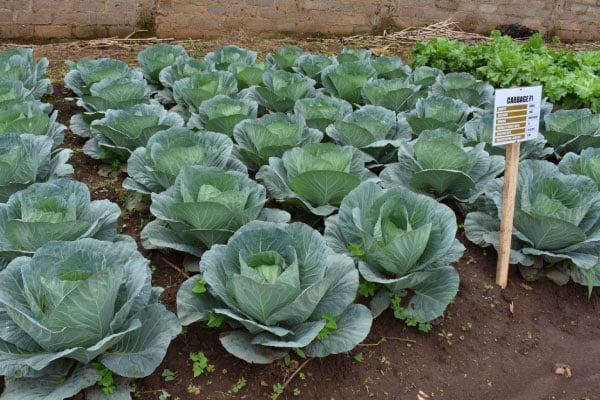Prime
How to get top yields for cabbage

Cabbages have long been a favourite among farmers due to their relatively low cost of production and rapid maturation, at just three months.
However, with food supply chains now far more local as a result of the Covid -19 travel restrictions, prices are varying sharply between regions, seeing farmers venture into crops that were previously coming from other regions.
For those seeking to begin cabbage production, or just to raise their yields, Seeds of Gold takes you into the ideal farming methods, from nursery to farm:
Nursery
Cabbage seedling should stay here between four and five weeks. With four weeks being the sweet spot you want to carry out transplanting.
Sift the soil you’ll use--ensure it has no lumps, pebbles or sticks as they obstruct seedling growth.
Mix this soil in with manure, the manure must be more than the soil.
Sunbake this mixture to kill off pests or drench it using pesticides.
Mix in sand into the seedlings as you sow, cabbage seedlings are very small and this makes it possible to pick them out.
Plant the seedling at a maximum five millimetre depth. The soils used must again be very light to allow the roots easily go under.
Shade your seedlings to avoid excessive direct sunlight and water. The shade also prevents your seedlings from breaking if they are directly rained on.
Water twice a week, less during rainy season. Use a perforated hand held watering can. This avoids the force of water from a pipe or sprinkler that can injure the still young stems and leaves.
As weeds emerge, root them out manually. This should be done regularly and while they are still nascent to avoid uprooting them with the seedlings
Spray your nursery bed weekly for pests or whenever you inspect for and find pests.. Apply foliar feed to the seedlings twice over their four week stay in the nursery.
Transplanting
Seedlings should be transferred in the evening when the sun is less biting to enable them best absorb the transplanting shock and remain supple.
Only remove the seedling number you’ll be able to entirely transplant for the day.
Ensure they are adequately watered before transplanting.
Have the nursery near as is possible to the land you’ll be transferring them to.
Carry the seedling in bits, ensuring you scoop them out in lumps, do not pluck them out.The area you are transplanting your cabbages to should have been well weeded out.
For large variety cabbages such as the Queen and Michelle F1 you’ll need about 60 cm distance between holes.
Smaller cabbages such as Gloria F1 need just 45cm between them. Adequate spacing allows for proper canopy formation and gives the farmer space needed to tend to their crop.
The holes dug for transplanting should be allowed to ‘warm up’ for a few days to rid them of pests and allow for air permeation.
Use old and dried manure--this will have killed off pests such as nematodes, grasshoppers and worms. You can drench it out to be sure that pests that are vectors for disease are killed off.
Use a soda bottle top/ teaspoon of fertiliser for every hole.
Water generously before introducing seedling to an environment as similar to the one they were used to in the nursery.
Look out for any worms, caterpillars and spray.
The second to third months are the watching period as you wait for the cabbage to fully mature and reach out to prospective buyers.




